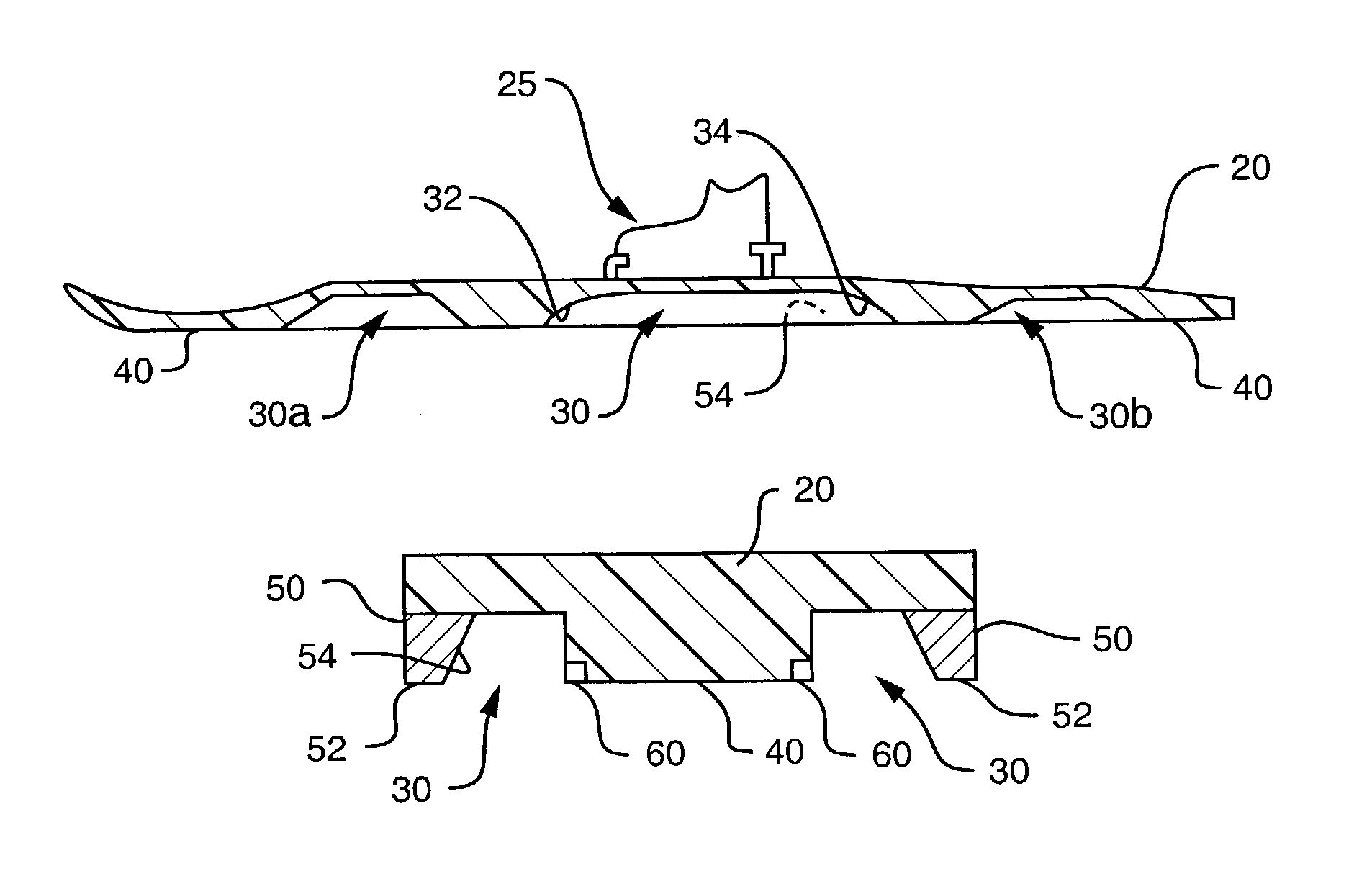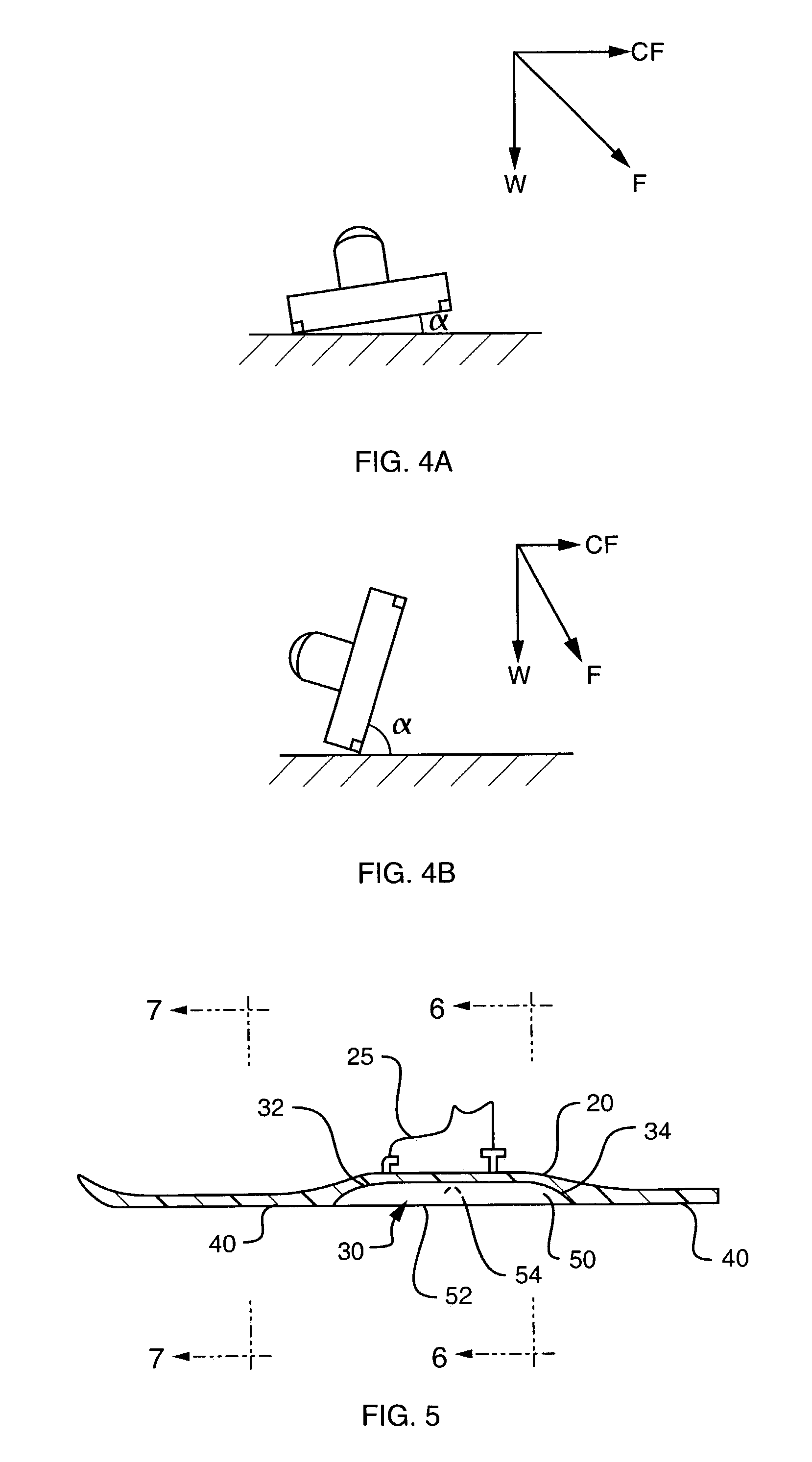Ski with tunnel and enhanced edges
a technology of enhanced edges and skis, applied in the field of skis with enhanced edges, can solve the problems of reducing the carving and turning characteristics of blades b>1/b> to the right while at the same angle, and the skier cannot create a controlling force, so as to achieve the effect of improving carving and turning characteristics
- Summary
- Abstract
- Description
- Claims
- Application Information
AI Technical Summary
Benefits of technology
Problems solved by technology
Method used
Image
Examples
Embodiment Construction
[0054]As used herein, the term ski equipment or snow ski or ski is intended to encompass other similar equipment used for sliding across snow and / or ice, including snow boards, hyper carve skis, and snow gliders. Snow gliders were created by the inventor herein and are described in pending U.S. patent application Ser. No. 10 / 286,643 filed Oct. 31, 2002; generally, snow gliders are similar to a snow skate, and long like a snow ski but with narrower widths.
[0055]Typically, one snow ski of a pair is equipped on each of a skier's feet using ski boots and bindings in a customary and known manner. While a single snow ski may be shown or discussed, the same details are intended to apply to the other snow ski of a matched pair, when normally used as a pair. Accordingly, the descriptions herein should be interpreted to apply to the second snow ski in a pair, as well, unless noted otherwise.
[0056]Referring now to the drawings, in which like reference numerals are used to refer to the same or ...
PUM
 Login to View More
Login to View More Abstract
Description
Claims
Application Information
 Login to View More
Login to View More - R&D
- Intellectual Property
- Life Sciences
- Materials
- Tech Scout
- Unparalleled Data Quality
- Higher Quality Content
- 60% Fewer Hallucinations
Browse by: Latest US Patents, China's latest patents, Technical Efficacy Thesaurus, Application Domain, Technology Topic, Popular Technical Reports.
© 2025 PatSnap. All rights reserved.Legal|Privacy policy|Modern Slavery Act Transparency Statement|Sitemap|About US| Contact US: help@patsnap.com



